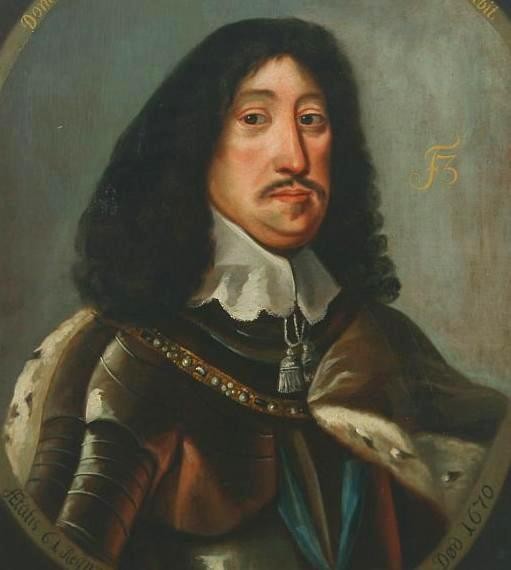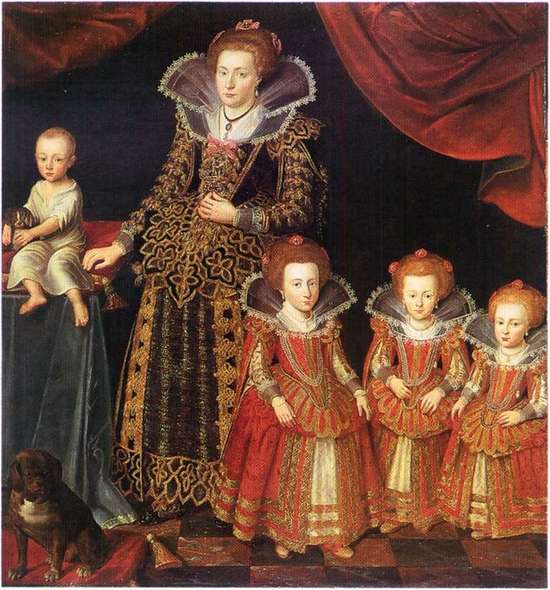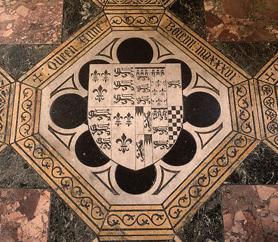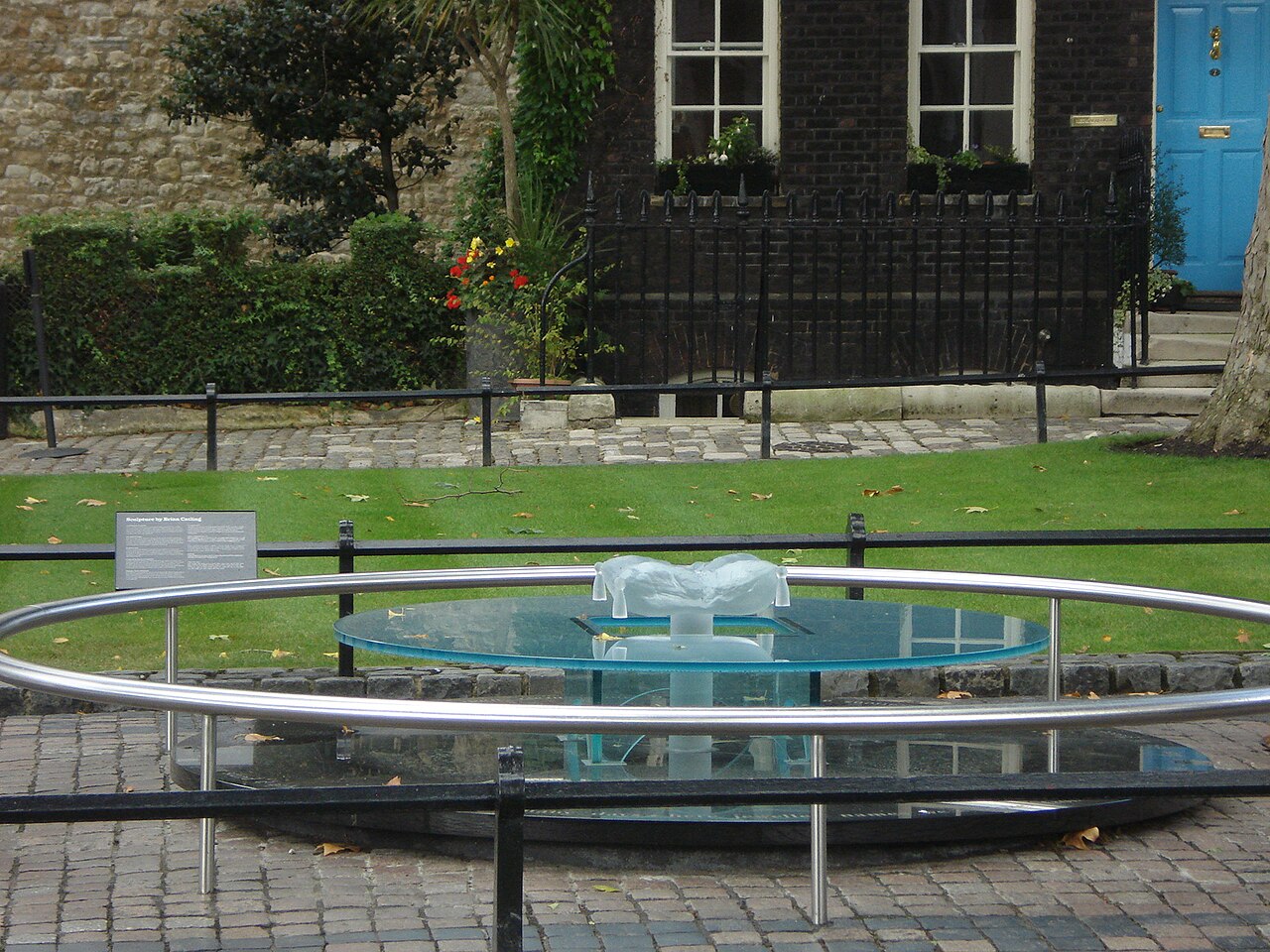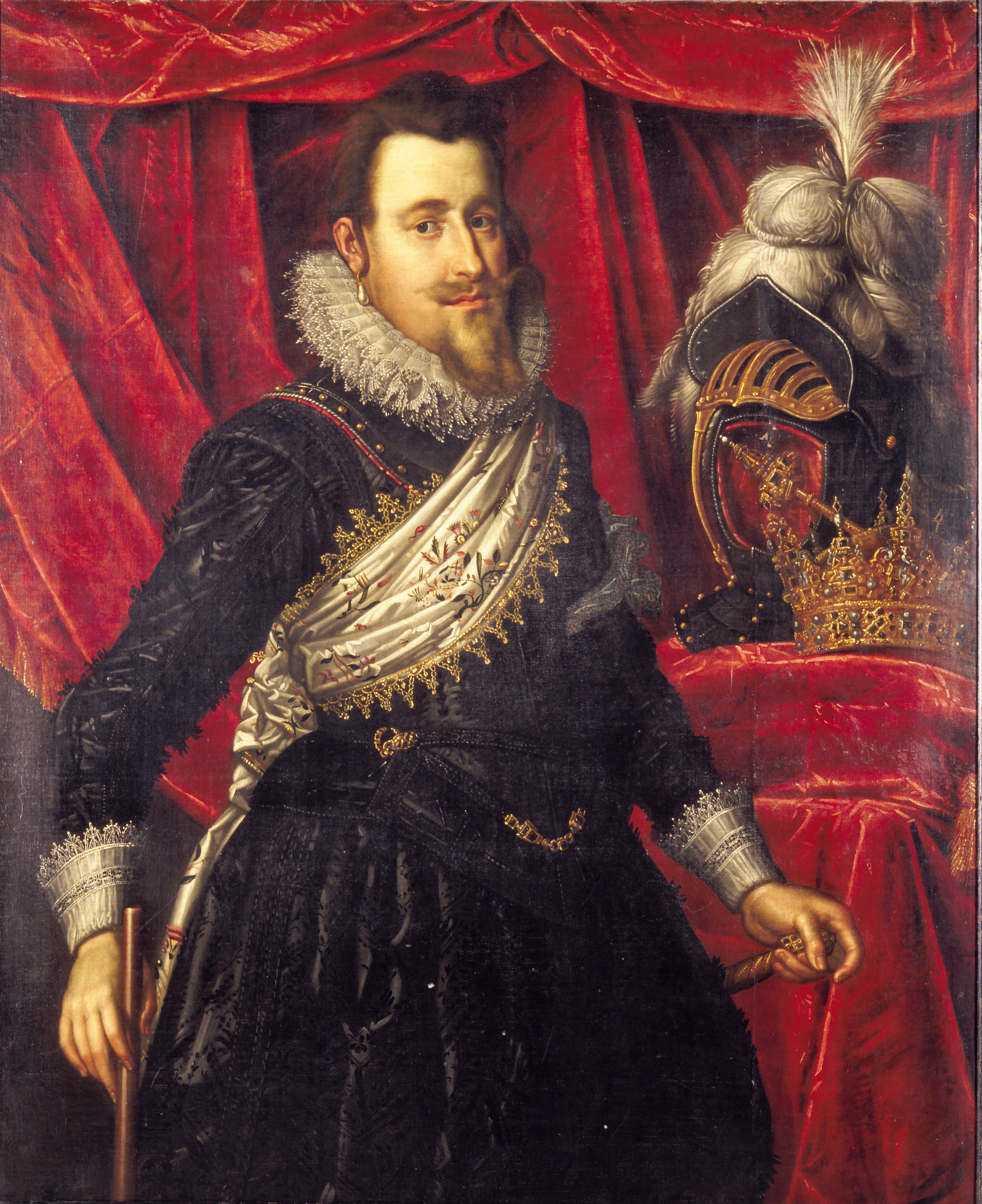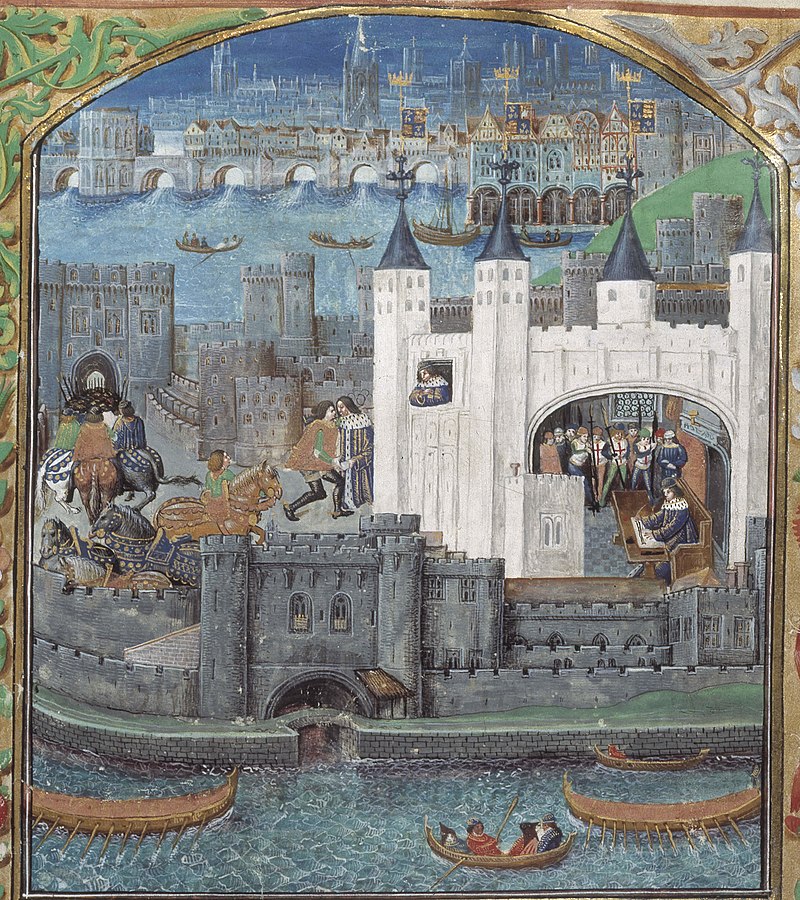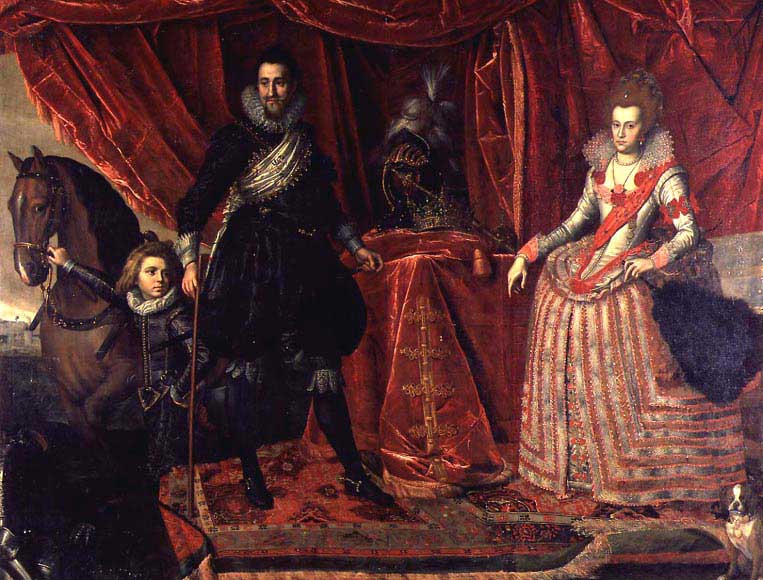by Susan Flantzer
© Unofficial Royalty 2021

The north gatehouse, the main entrance of St James’s Palace on Pall Mall. The large window to the right of the gatehouse is the stained glass window of the Chapel Royal; Credit – Wikipedia
The Chapel Royal at St. James’s Palace is a royal peculiar which means it is under the direct jurisdiction of the monarch. It is also a chapel royal, an establishment in the royal household serving the spiritual needs of the sovereign. It is located in the main block of St. James’s Palace in London, England, less than a half-mile from Buckingham Palace. St. James’s Palace was built in the 1530s during the reign of King Henry VIII on the site of a leper hospital dedicated to St. James the Less, hence the name St. James’s Palace. St. James’s Palace was displaced in the late-18th and early-19th centuries as a residence by Buckingham Palace.
St. James’s Palace is still a working palace, and the Royal Court is still formally based there, despite the monarch residing elsewhere. Ambassadors from foreign countries to the United Kingdom are still accredited to the Court of St. James’s. St. James’s Palace is the home of several members of the British royal family and their household offices, and it hosts many receptions each year for charities associated with members of the royal family. The State Apartments are sometimes used for entertaining during state visits, as well as for other ceremonial and formal occasions. For instance, the Accession Council meets in St. James’s Palace following the death of a monarch, and the accession of a new monarch is proclaimed by Garter King of Arms from the Proclamation Gallery overlooking Friary Court of St. James’s Palace.
The Chapel Royal at St. James’s Palace, with its oak paneling, marble floors, and green lamps on the pews, is small and seats only 150 people. Old tapestries hang from the cream-colored walls and the ceiling is decorated with golden swirls of royal initials and coats of arms. A beautiful stained glass window over the altar floods the chapel with natural light.
The chapel ceiling was copied from the mosaics in the ambulatory vault at Santa Costanza, a 4th-century church in Rome, Italy. The honeycomb-like ceiling panels were painted by Hans Holbein the Younger with royal cyphers and coats of arms in honor of King Henry VIII’s (short-lived) marriage to his fourth wife Anne of Cleves.
The current stained glass window over the altar, designed by artist John Napper, was installed to commemorate Queen Elizabeth II’s Golden Jubilee in 2002. A tree in the center panel is occupied by birds, red and white flowers that resemble Tudor roses, and plaques with names of countries affiliated with Queen Elizabeth II. ‘ER’ (Elizabeth Regina, Elizabeth the Queen in Latin) is written on the trunk of the tree. The two side panels show the Gospel writers Matthew, Mark, Luke, and John. Click on the photo below to see an enlargement.
Embed from Getty Images
The stained glass window commemorating Queen Elizabeth II’s Golden Jubilee
In 1836, alterations to the chapel were carried out by architect Sir Robert Smirke. Smirke enlarged the chapel, installed oak paneling, and added a new ceiling at the south end, decorated with the names and royal cyphers of King William IV, the king at that time, and his wife Queen Adelaide to match the earlier ceiling painted by Holbein. During World War II, the chapel was damaged by a bomb but was fully restored.
Embed from Getty Images
Interior view of the Chapel Royal in St James’s Palace, 1816
The Chapel Royal at St. James’s Palace has been used since the time of King Henry VIII and is still used by the British royal family. Both Prince George of Wales and Prince Louis of Wales, sons of Prince William, The Prince of Wales, were christened there. When St. James’s Palace was a royal residence, the royal family and their courtiers worshipped at the Chapel Royal. Queen Mary I’s heart is buried beneath the choir stalls. In 1588, Queen Elizabeth I said prayers in the Chapel Royal as she waited to receive messages of the progress of the Spanish Armada. In 1649, after being convicted of treason and other high crimes and sentenced to death during the English Civil War, King Charles I was held at St. James’s Palace. On the day of his execution, King Charles I received Holy Communion in the Chapel Royal and then walked the short distance from St. James’s Palace to the Palace of Whitehall where a scaffold for his beheading had been built outside the Banqueting House.
Christenings at the Chapel Royal, St. James’s Palace
Embed from Getty Images
Christening of Princess Beatrice of York
- King Charles II (1630 – 1685, son of King Charles I) christened June 27, 1630
- Mary, Princess Royal (1631 – 1660, daughter of King Charles I: christened November 4, 1631
- King James II (1633 – 1701, son of King Charles I) christened November 24, 1633
- Princess Elizabeth (1635 – 1650, daughter of King Charles I) christened January 2, 1636
- Princess Anne (1637 – 1640, daughter of King Charles I) christened March 30, 1637
- Prince Henry, Duke of Gloucester (1640 – 1660, son of King Charles I) christened July 22, 1640
- Queen Mary II (1662- 1694, daughter of King James II) christened May 9, 1662
- Princes James, Duke of Cambridge (1663 – 1667, son of King James II) christened July 22, 1663
- Queen Anne (1665 – 1714, daughter of King James II) christened 1665
- Prince Charles, Duke of Kendal (1666 – 1667, son of King James II) christened 1666
- Prince Edgar, Duke of Cambridge (1667 – 1671, son of King James II) christened September 16, 1667
- James Francis Edward Stuart, Prince of Wales (1688 – 1766, son of King James II, known as The Old Pretender) baptized according to the rites of the Catholic Church October 15, 1688
- Prince George William (1717 – 1718, son of King George II) christened December 6, 1717
- Princess Augusta of Wales (1737 – 1813, daughter of Frederick, Prince of Wales) christened September 19, 1737
- King George IV (1762 – 1830, son of King George III) christened September 8, 1762
- King William IV (1765 – 1837, son of King George III) christened September 18, 1765
- Charlotte, Princess Royal (1766 – 1828, daughter of King George III) christened October 27, 1766
- Princess Elizabeth of Clarence (1820 – 1821, daughter of King William IV) christened December 10, 1820
- Lord Frederick Windsor (son of Prince Michael of Kent) christened July 7, 1979
- Lady Gabriella Windsor (daughter of Prince Michael of Kent) christened June 8, 1981
- Princess Beatrice of York (daughter of Prince Andrew, Duke of York) christened December 20, 1988
- Prince George of Wales (son of Prince William, The Prince of Wales) christened October 23, 2013
- Miss Maud Windsor (daughter of Lord Frederick Windsor) christened December 16, 2013
- Prince Louis of Wales (son of Prince William, The Prince of Wales) christened July 9, 2018
Weddings at the Chapel Royal, St. James’s Palace

Wedding of the future King George V and Princess Victoria Mary of Teck; Credit- By Laurits Regner Tuxen (1853-1927) – Royal Collection [1] Identification key [2], Public Domain, https://commons.wikimedia.org/w/index.php?curid=8759360
- Queen Anne (daughter of King James II) married Prince George of Denmark on July 28, 1683
- Anne, Princess Royal (daughter of King George II) married Willem IV, Prince of Orange on March 25, 1734
- Frederick, Prince of Wales (son of King George II, predeceased his father) married Princess Augusta of Saxe-Gotha-Altenburg on April 27, 1736
- King George III (son of Frederick, Prince of Wales, grandson of King George II) married Princess Charlotte of Mecklenburg-Strelitz on September 8, 1761
- King George IV (son of King George III) married Princess Caroline of Brunswick-Wolfenbüttel on April 8, 1795
- Charlotte, Princess Royal (daughter of King George III) married the future King Friedrich I of Württemberg on May 18, 1797
- Princess Mary (daughter of King George III) married Prince William Henry, Duke of Gloucester on July 22, 1816
- Queen Victoria (daughter of Prince Edward, Duke of Kent and granddaughter of King George III) married Prince Albert of Saxe-Coburg and Gotha on February 10, 1840 – Wedding of Queen Victoria and Prince Albert of Saxe-Coburg and Gotha
- Victoria, Princess Royal (daughter of Queen Victoria) married the future Friedrich III, German Emperor, King of Prussia on January 25, 1858 – Wedding of Victoria, Princess Royal and Friedrich III, German Emperor, King of Prussia
- King George V (son of King Edward VII) married Princess Victoria Mary of Teck on July 6, 1893 – Wedding of King George V and Princess Victoria Mary of Teck
Other Royal Events at the Chapel Royal, St. James’s Palace
- The coffin of Diana, Princess of Wales rested in the Chapel Royal, St. James’s Palace from August 31 – September 5, 1997. On September 5, 1997, the coffin was moved to Kensington Palace where it would remain until the funeral at Westminster Abbey on September 6, 1997.
- Meghan Markle, the future wife of Prince Harry, Duke of Sussex, was baptized and confirmed into the Church of England at the Chapel Royal, St. James’s Palace on March 6, 2018.
This article is the intellectual property of Unofficial Royalty and is NOT TO BE COPIED, EDITED, OR POSTED IN ANY FORM ON ANOTHER WEBSITE under any circumstances. It is permissible to use a link that directs to Unofficial Royalty.
Works Cited
- Bull, M., 2020. St James’s Palace: Photos inside Princess Anne’s official London residence. [online] Express.co.uk. Available at: <https://www.express.co.uk/life-style/property/1400245/princess-anne-royal-family-inside-st-James-palace-chapel-pictures-Beatrice> [Accessed 15 March 2021].
- Colinburns.com. 2021. The British Monarchy. [online] Available at: <http://www.colinburns.com/di/www.royal.gov.uk/palaces/chapel.htm> [Accessed 15 March 2021].
- En.wikipedia.org. 2021. Chapel Royal. [online] Available at: <https://en.wikipedia.org/wiki/Chapel_Royal#St_James’ss_Palace> [Accessed 15 March 2021].
- En.wikipedia.org. 2021. St James’s Palace. [online] Available at: <https://en.wikipedia.org/wiki/St_James%27s_Palace> [Accessed 15 March 2021].
- Flantzer, Susan, 2019. British Royal Christenings: House of Hanover. [online] Unofficial Royalty. Available at: <https://www.unofficialroyalty.com/house-of-hanover-christenings/> [Accessed 15 March 2021].
- Flantzer, Susan, 2019. British Royal Christenings – House of Stuart. [online] Unofficial Royalty. Available at: <https://www.unofficialroyalty.com/british-royal-christenings-house-of-stuart/ 2019> [Accessed 15 March 2021].
- Flantzer, Susan, 2012. Weddings of British Monarchs’ Children: Tudors – Windsors. [online] Unofficial Royalty. Available at: <https://www.unofficialroyalty.com/royal-weddings/british-royal-weddings/weddings-of-british-monarchs-children/> [Accessed 15 March 2021].
- The Royal Family. 2021. The Chapel Royal. [online] Available at: <https://www.royal.uk/chapelroyal> [Accessed 15 March 2021].

